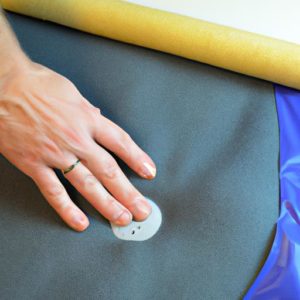Table of Contents
Are you tired of those unsightly nail holes ruining the look of your trim? Whether you’re a homeowner or a professional contractor, repairing nail holes in trim is an essential task that can greatly improve the appearance of any room. In this comprehensive guide, we’ll walk you through the process of filling nail holes in your trim like a seasoned pro.
Gathering the Necessary Materials
Before you kickstart your nail hole repair project, it’s crucial to gather all the materials you’ll need. Here’s a list of the items you should have on hand:
- Wood filler or spackling compound
- Putty knife or scraper
- Sandpaper (120-grit and 220-grit)
- Clean, damp cloth
- Paint or stain (optional)
When choosing your wood filler or spackling compound, it’s important to select a product that matches the color of your trim. If you plan on painting, opt for a filler that dries to a neutral color. However, if you’re staining your trim, make sure to choose a filler that matches the stain color.
For sanding, utilize 120-grit sandpaper to smooth out the filled hole, while 220-grit sandpaper is perfect for prepping the surface before painting or staining. Additionally, keep a clean, damp cloth handy to wipe down the surface after sanding.
By gathering all the necessary materials before diving into the project, you’ll ensure a seamless and efficient process, resulting in a professional-looking finish.
Preparing the Surface
To achieve optimal results when filling nail holes, it’s imperative to properly prep the surface. Start by cleaning the area with a damp cloth to eliminate any dirt or debris. Next, lightly sand the surface with 120-grit sandpaper. By doing so, you ensure that the filler adheres properly and creates a smooth finish.
After sanding, wipe down the surface once again with a clean, damp cloth to remove any dust or debris. Once the surface is clean and dry, you’re ready to begin filling the nail holes.
Filling the Nail Holes
With the surface properly prepared, it’s now time to fill those nail holes. Here’s a step-by-step approach:
Selecting the Right Filler
Consider the size of the hole when choosing a filler. For smaller holes, spackling compound or wood filler is ideal, while larger holes may require a two-part epoxy filler. Additionally, take into account the color of your trim and opt for a filler that matches it seamlessly.
Applying the Filler
Using a putty knife or scraper, apply the filler to the hole, making sure to slightly overfill it. Once the hole is filled, use the scraper or putty knife to level the filler with the surface. Apply enough pressure to guarantee proper adhesion of the filler.
Smoothing Out the Filler
Allow the filler to dry completely, adhering to the specific drying time mentioned on the product’s instructions. Once dry, gently sand the surface with 120-grit sandpaper. This step will eliminate any excess filler, resulting in a smooth surface.
After sanding, wipe down the surface once again with a clean, damp cloth to remove any dust or debris. If necessary, repeat the filling and sanding process until the hole is completely filled and the surface is impeccably smooth. When the surface is ready, you can proceed to apply paint or stain to match the surrounding trim.
By following these straightforward steps, you’ll be able to repair nail holes in your trim with the expertise of a seasoned professional. With a little practice, you’ll achieve a flawless finish that heightens the visual appeal of any room.




